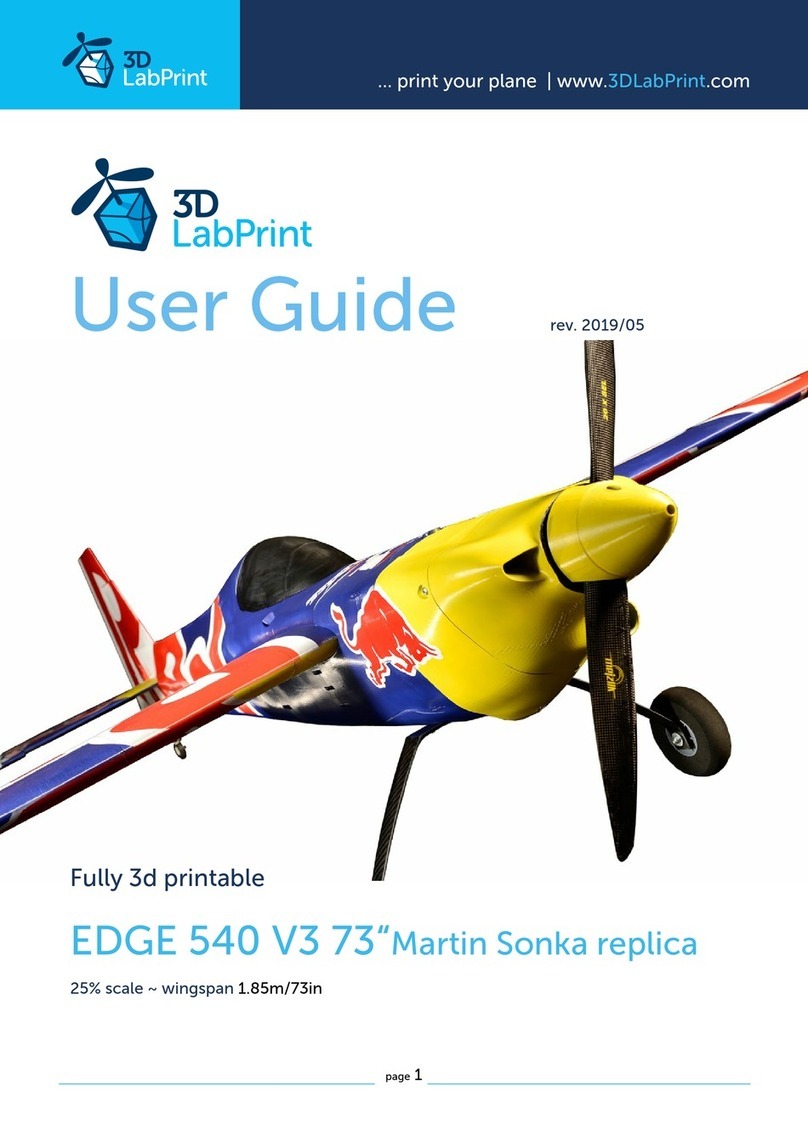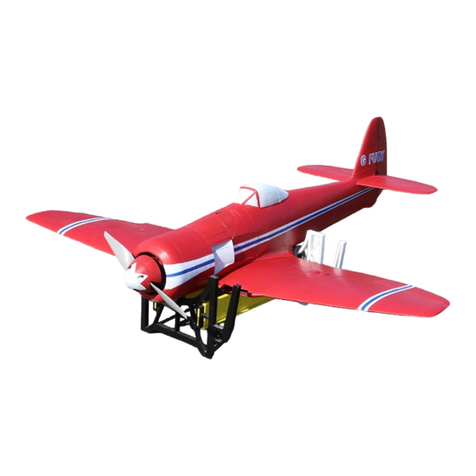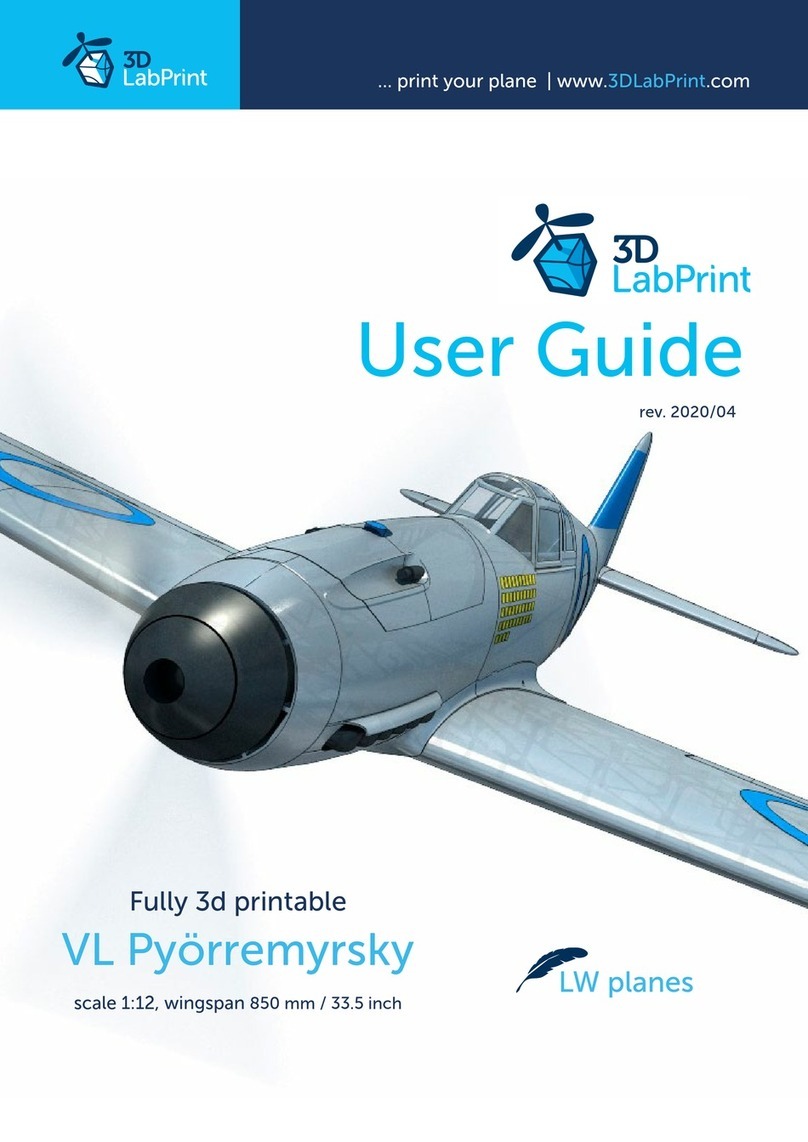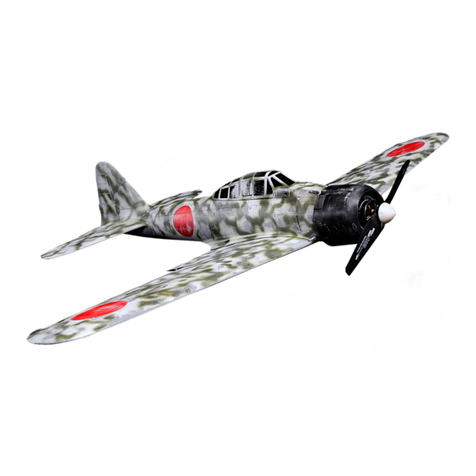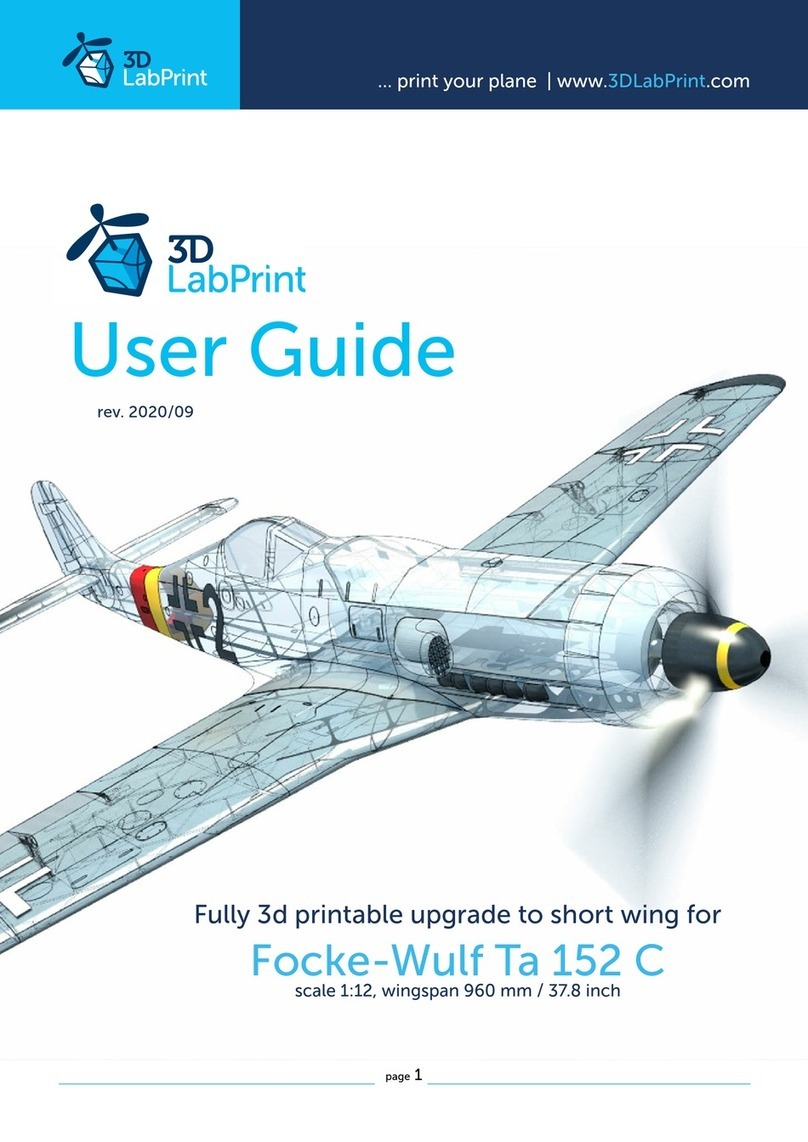
2 3
Inhalt
I. Übersichtswerte............................................................................. 5
A. Kennzeichnung....................................................................................... 5
1. Verwendungszweck...................................................................................... 5
2. Bauform ..................................................................................................... 5
3. Allgemeine Sicherheitshinweise .....................................................................6
3. Kaufteile ....................................................................................................14
5. Biegelehren für Fahrwerk (optional).............................................................20
A. Allgemein Hinweise ............................................................................. 21
1. Vor dem Lackieren! ....................................................................................42
2. Anbringen der Tragäche ...........................................................................35
5. Flugzeugübersicht ........................................................................................8
3. Rumpf........................................................................................................17
III. Zusammenbau.......................................................................... 21
1. Hauptmaße .................................................................................................7
2. Motorhaube...............................................................................................16
1. Bauteile und Gewicht..................................................................................10
VI. Fahrwerk (optional)............................................................... 38
1. Biegen des Haupt-Fahrwerks.......................................................................38
2. Teil- und Gewichtsübersicht.........................................................................11
1. Tragäche................................................................................................. 15
6. Schattenriß...................................................................................................9
VII. Farbprole ................................................................................. 42
B. Daten und Leistungsangaben ............................................................... 7
C. Aufbau des Flugzeuges........................................................................ 10
3. Zusammenbau...........................................................................................22
2. Verwendete Symbole ..................................................................................21
1. Einsetzen des Akkumulators ....................................................................... 34
II. Druckeinstellungen.................................................................. 15
IV. Schaltplan Bord-Elektronik .............................................. 33
3. Flugleistungen..............................................................................................7
V. Flugvorbereitungen ................................................................. 34
2. Einsetzen des Haupt-Fahrwerks ...................................................................39
3. Biegen des Sporn-Fahrwerks...................................................................... 40
2. Triebwerksanlage .........................................................................................7
4. Gewichstangaben ........................................................................................7
4. Ruder und Zubehör ....................................................................................18
3. Überprüfen des Schwerpunktes ...................................................................36
1. Vor dem Zusammenbau ............................................................................ 21
5. Nivellier- und Einstellplan ...........................................................................37
4. Einsetzen des Sporn-Fahrwerks ...................................................................41
4. Einstellung der Fernsteuerung, Mischer und Ruderwege ................................36
2. Abkleben der Fenster..................................................................................42
Seite
Abb. 2: Flugzeugübersicht .............................................................................8
Abb. 1: Gesamtansicht ................................................................................ 5
Abb. 3: Schattenriß .......................................................................................9
Abb. 4: Bauteile ..........................................................................................10
Abb. 5: Teil- und Gewichtsübersicht..............................................................11
Abb. 6: Druckplatte Tragäche.....................................................................15
Abb. 18: Montage Höhenstabilisator ..............................................................24
Abb. 28: Vorbereitung Motorträger ................................................................28
Abb. 7: Druckplatte Haube ..........................................................................16
Abb. 20: Montage Höhenruder 1...................................................................25
Abb. 11: Druckplatte Biegelehren...................................................................20
Abb. 14: Montage Rumpf 2 ...........................................................................22
Abb. 19: Montage Höhenruderanlenkung ......................................................24
Abb. 12: Montage Haube..............................................................................22
Abb. 29: Montage Motor und Drehzahlregler .................................................29
Abb. 25: Montage Seitenruder 1 ....................................................................27
Abb. 37: Montage Querruderanlenkung 1 .....................................................32
Abb. 8: Druckplatte Rumpf 1........................................................................17
Abb. 27: Vorbereitung Montage Motorträger ..................................................28
Abb. 10: Druckplatte Zubehör........................................................................18
Abb. 21: Montage Höhenruder 2...................................................................25
Abb. 16: Montage Rumpf 4 ...........................................................................23
Abb. 22: Montage Höhenruder 3...................................................................26
Abb. 13: Montage Rumpf 1 ...........................................................................22
Abb. 23: Montage Höhenruder 4...................................................................26
Abb. 24: Montage Höhenruder 5...................................................................26
Abb. 9: Druckplatte Rumpf 2........................................................................17
Abb. 15: Montage Rumpf 3 ...........................................................................22
Abb. 17: Einbau Höhen- u. Seitenruderservo ..................................................23
Abb. 26: Montage Seitenruder 2 ....................................................................27
Abb. 32: Montage rechte Tragäche ..............................................................30
Abb. 33: Montage linke Tragäche.................................................................30
Abb. 31: Einbau Motor..................................................................................29
Abb. 34: Montage Tragäche ........................................................................31
Abb. 35: Montage Querruder 1 .....................................................................31
Abb. 30: Einbau Drehzahlregler.....................................................................29
Abb. 36: Montage Querruder 2 .....................................................................31
Abb. 38: Montage Querruderanlenkung 2 .....................................................32
Seite
Abbildungen
design
general safety instructions
Marking
weight information
Overview values
Data and performance data
main dimensions
aircraft overview
shadow crack
partial and weight overview
print settings
flight services
wing
engine system
engine bonnet
purpose of use
purchased parts
components and weight
Structure of the aircraft
fuselage
assembly
mounting the wing
General information
bending gauges for chassis
oars and accessories
assembly
before assembly
symbols used
wiring diagram
Flight preparations
insertion of the accumulator
levelling & adjustment plan
chassis (optional)
bending main landing gear
insertion main landing gear
insertion of the tail chassis
colour profiles
before painting!
bending the tail chassis
masking the windows
checking the centre of gravity
RC travel setup
Mounting elevator 1
Print plate Wing
Motor and speed governor
Mounting right wing
Aileron mounting 1
Aileron linkage assbly 1
Print plate fuselage 1
Mounting stabilizer
aircraft overview
Print plate Hood
P. plate Bending gauges
Mounting elevator 4
component parts
Fuselage assembly 1
Fuselage assembly 4
Prep. Motor mount assbly
Prep. engine mount
Installation governor
Fuselage assembly 3
Print plate fuselage 2
Mounting left wing
Print plate accessories
Mounting elevator 3
silhouette
Mounting hood
Mounting rudder 2
M.elevator control system
general view
Part and weight overview
Installation of servos
Fuselage assembly 2
Mounting elevator 2
Mounting elevator 5
Mounting rudder 1
Engine installation
Wing assembly
Aileron mounting 2
Aileron linkage assbly 2
content illustrations

